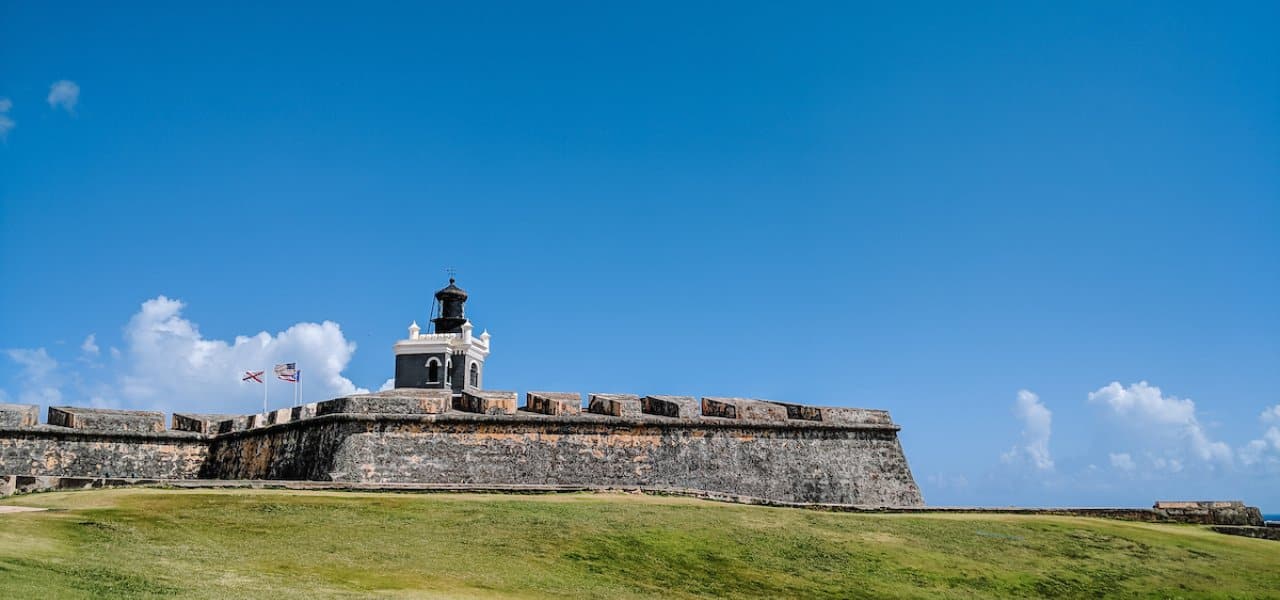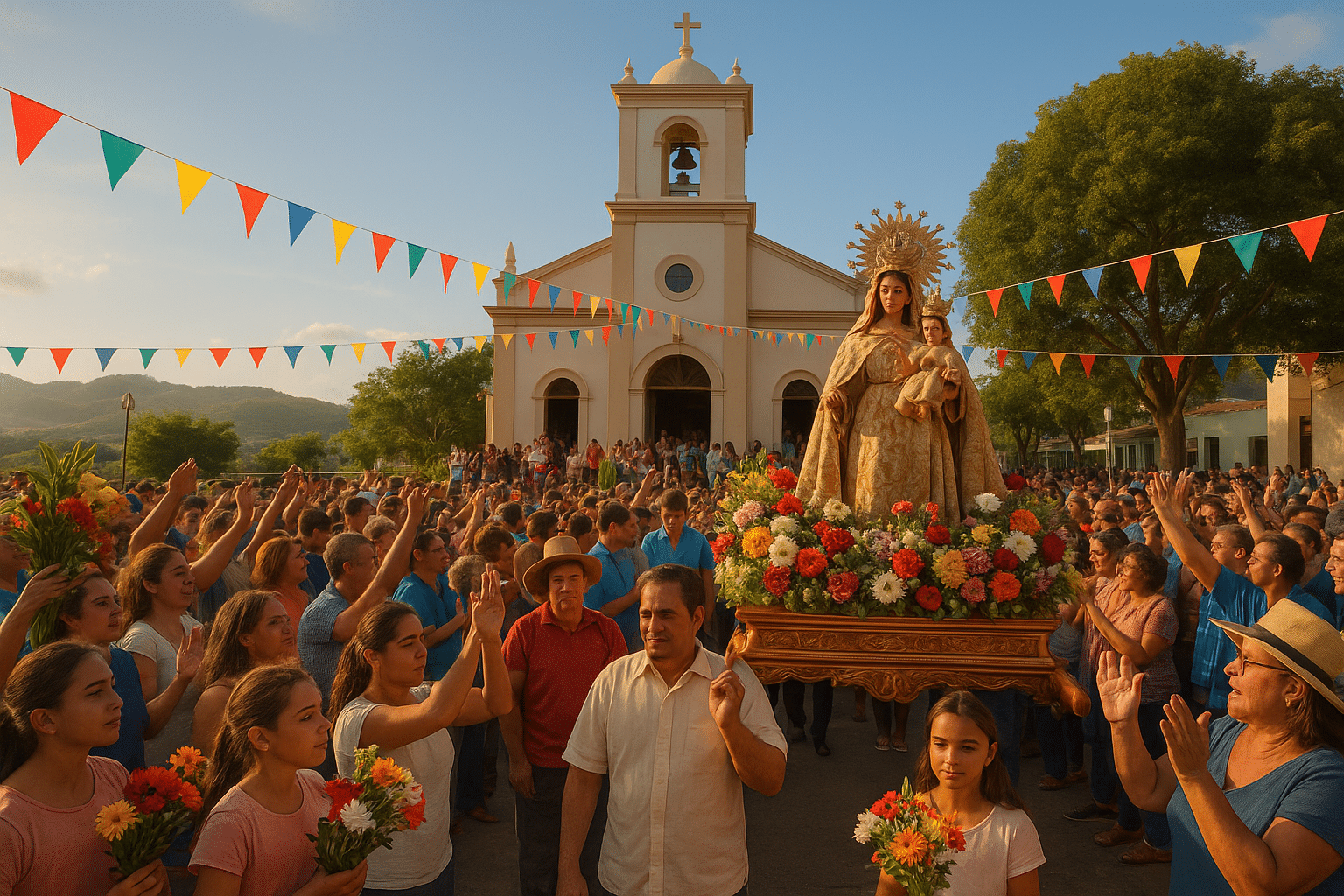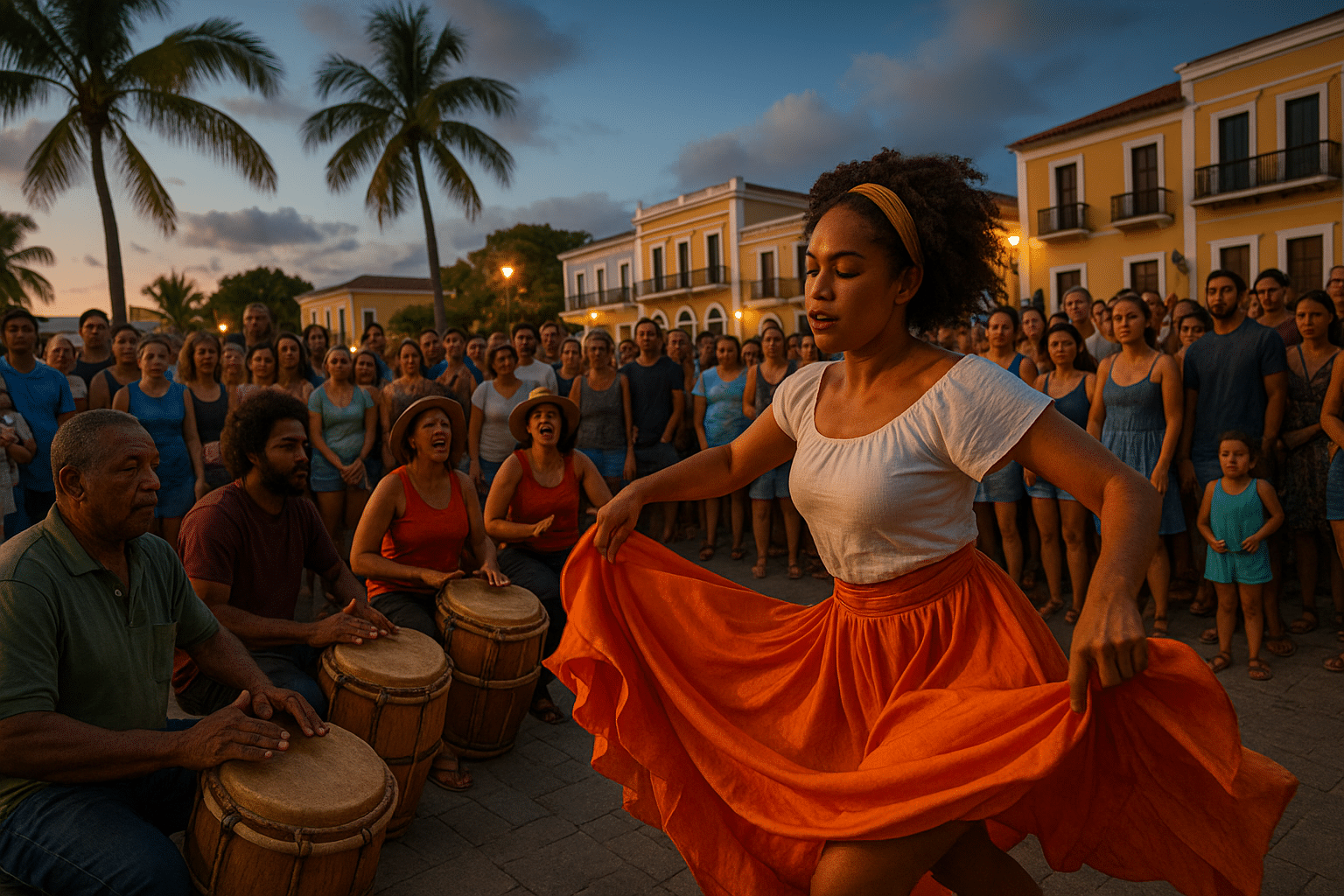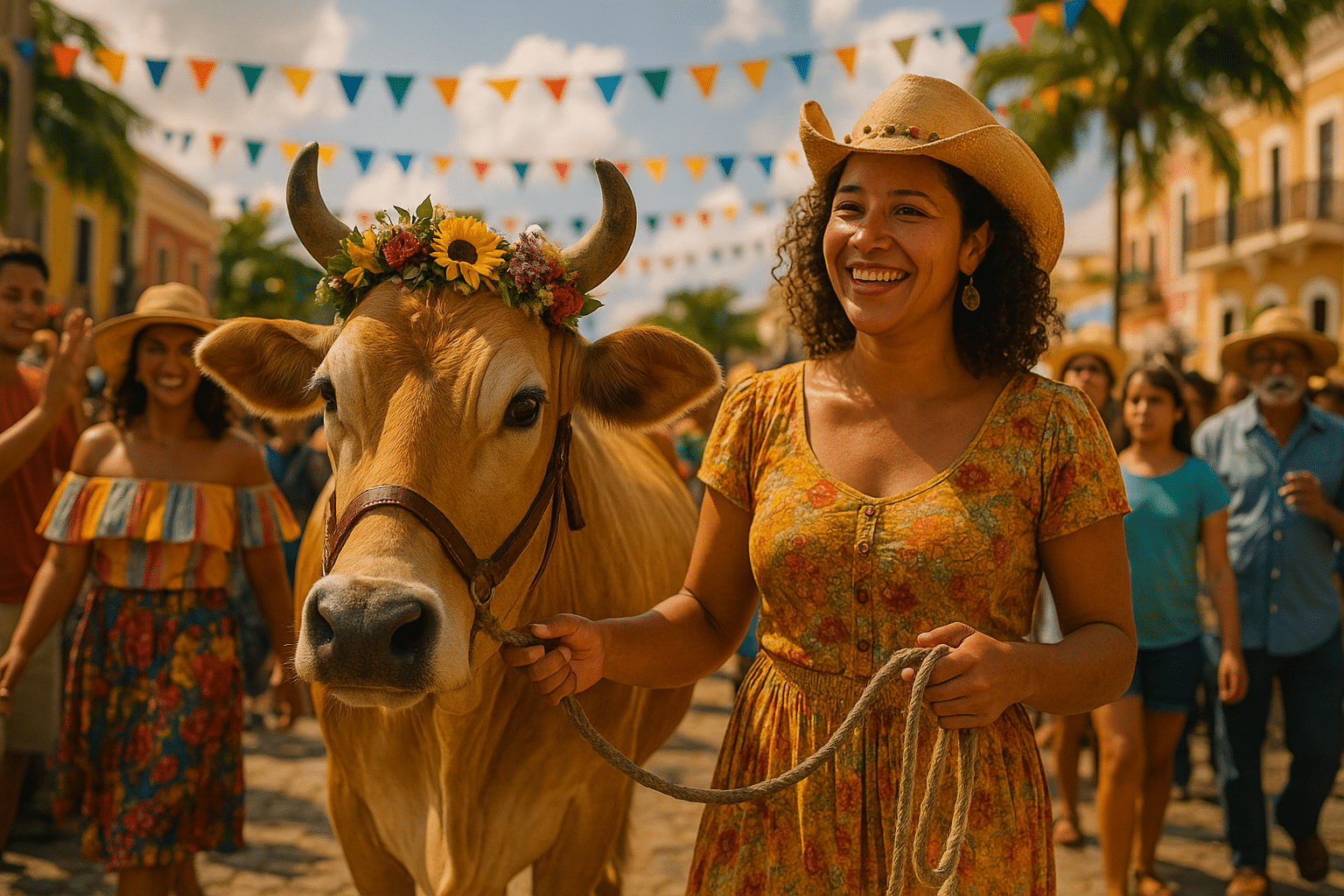Puerto Rico’s history is woven into every street, fort, and coastal view you’ll experience across the Island.
Long before Spanish colonizers arrived and renamed the Island Puerto Rico, or “Rich Port,” it was known by its original Taíno name: Borinquen. Derived from the word Borikén, it translates to the “Land of the Valiant and Noble Lord.” When Christopher Columbus landed here in 1493, he encountered a flourishing Taíno civilization whose influence still resonates today. Modern Puerto Ricans honor this heritage by proudly identifying as boricuas, a living connection to their ancestral roots. One of the most picturesque places that still carries the name is Punta Borinquen, on the Island’s western coast, where breathtaking natural scenery blends seamlessly with history.
For those eager to explore Puerto Rico’s deeper story, visiting its historic sites is an unforgettable experience. These locations are far more than relics of the past—they serve as gateways into the Island’s culture, combining historical importance with spectacular landscapes that continue to inspire.
Historic Sites in Puerto Rico
- Parque Ceremonial Indígena de Caguana
- Centro Ceremonial Indígena de Tibes
- Castillo San Felipe del Morro
- La Fortaleza
- Fuerte San Cristóbal
- Cuartel de Ballajá
- Capitolio de Puerto Rico
- Hacienda Buena Vista
Parque Ceremonial Indígena de Caguana
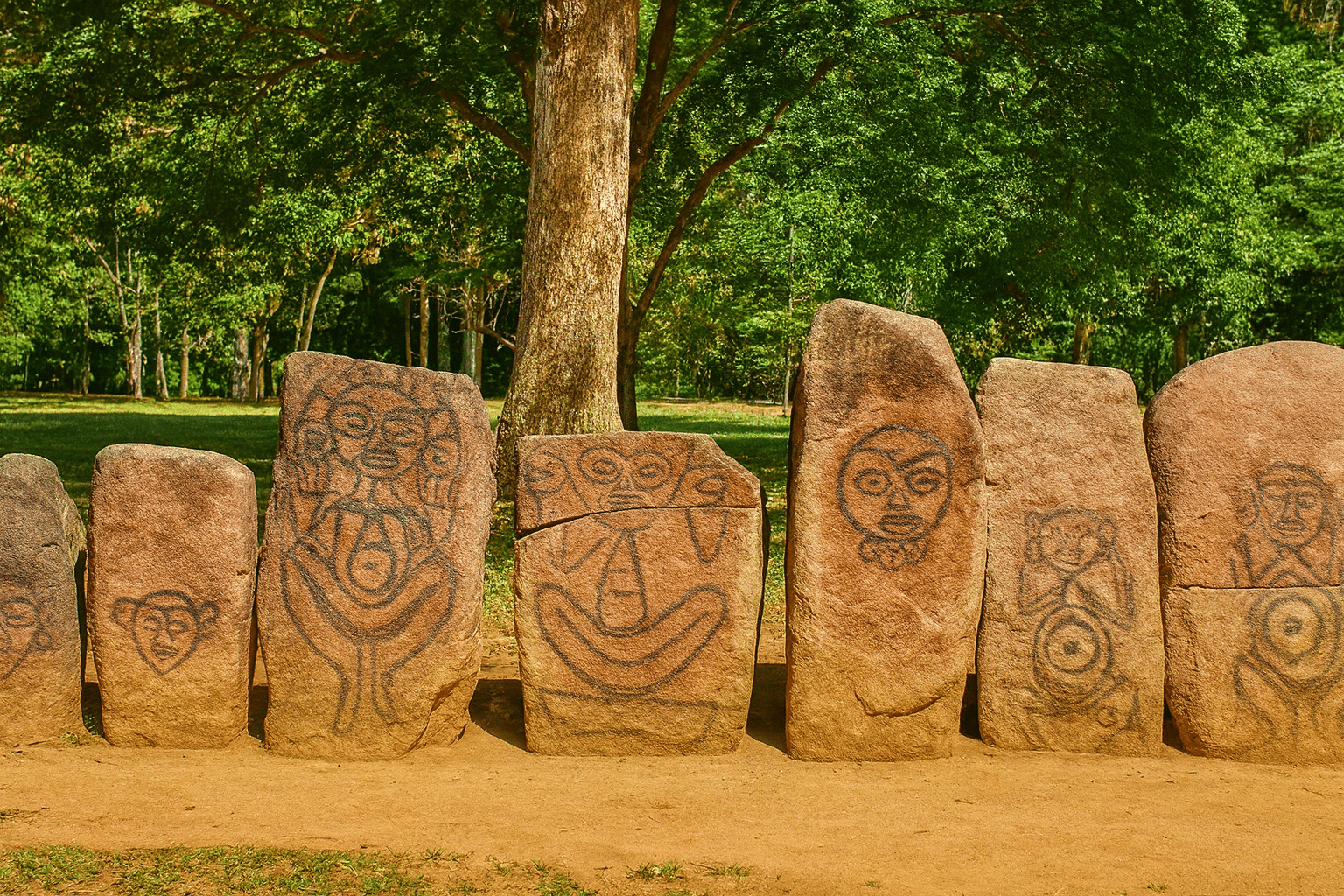
Utuado
Nestled in the mountains of Utuado, about a 90-minute drive from San Juan, the Caguana Indigenous Ceremonial Park stands as one of the most significant Taíno heritage sites in the Caribbean. This archaeological gem preserves the legacy of Puerto Rico’s first inhabitants, offering visitors a rare glimpse into their traditions, spirituality, and daily life.
At the heart of the park are several ceremonial plazas, or bateyes, once used by the Taíno for sacred rituals, dance ceremonies, and the ball game known as batos. Scattered throughout the grounds are remarkable petroglyphs carved into stone, along with pottery shards and limestone artifacts dating back to the 14th and 15th centuries, providing a tangible connection to this ancient culture.
Admission remains very accessible—$5 for adults and $4 for children and seniors—and covers entry to the museum, ceremonial plazas, and surrounding archaeological zones. The park is open daily from 8:30 a.m. to 4:30 p.m., with the exception of major holidays, making it an easy and enriching stop for those interested in exploring Puerto Rico’s Indigenous past.
Centro Ceremonial Indígena de Tibes

Ponce
Found in Ponce, about 90 minutes south of San Juan, the Centro Ceremonial Indígena de Tibes is considered one of Puerto Rico’s most valuable archaeological sites. The area was accidentally uncovered in 1975 after heavy rains and flooding revealed remnants of long-forgotten pre-Taíno settlements. Subsequent excavations brought to light an extraordinary complex featuring seven ball courts (bateyes), two ceremonial plazas, and hundreds of ancient burials accompanied by tools and artifacts.
Today, Tibes is much more than a preserved site—it serves as both a cultural and educational landmark. Its on-site museum showcases artifacts such as pottery shards, traditional weapons, and cemíes—sacred figurines symbolizing Taíno deities, which played a vital role in daily and spiritual life. Visitors can join guided tours in either Spanish or English, lasting about an hour, which include access to the museum exhibits and a short documentary film that vividly illustrates the Island’s Indigenous heritage.
Castillo San Felipe del Morro
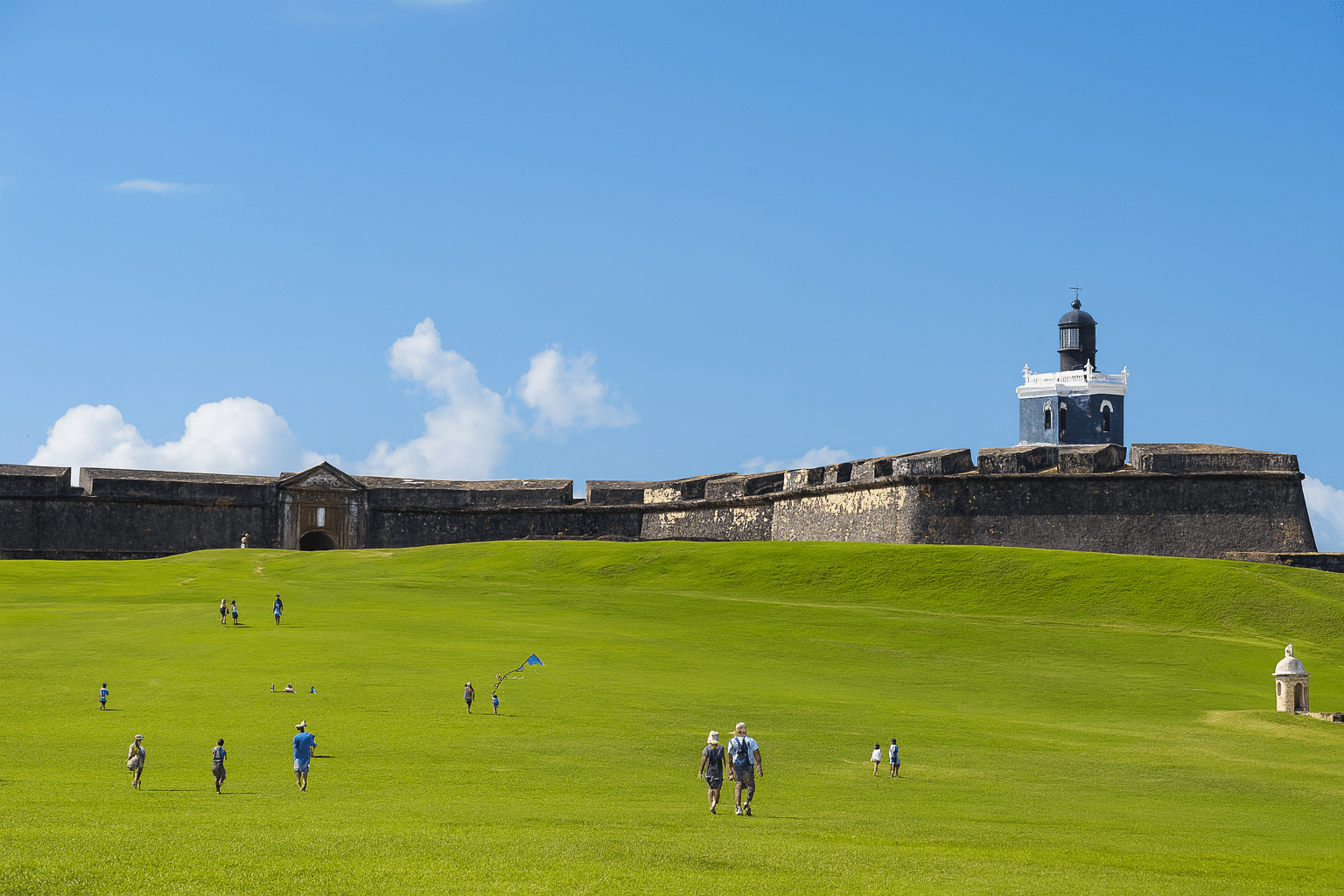
Old San Juan
The San Juan National Historic Site protects some of Puerto Rico’s most iconic treasures, including Castillo San Felipe del Morro, Castillo San Cristóbal, La Puerta de San Juan, portions of the original city walls, and Fort San Juan de la Cruz. Of these, El Morro is the true centerpiece—designated a UNESCO World Heritage Site and celebrated as one of the Island’s most enduring symbols. For travelers short on time, this is the one landmark that should be at the top of your list.
Work on El Morro began in the 16th century during Spanish colonial rule, built to protect San Juan Bay from pirates and enemy fleets. For generations, its massive stone walls stood strong against countless threats. Today, instead of guarding against invasions, it captivates visitors with panoramic views of the Atlantic Ocean and the pastel-colored beauty of Old San Juan’s skyline.
A favorite tradition among locals and visitors alike is kite flying on the sprawling green lawns in front of the fortress. Families gather to relax, kids enjoy the open space, and the ever-present ocean breeze fills the sky with colorful kites. It’s an experience that blends history, leisure, and community spirit in one unforgettable setting.
The site is open daily from 9:00 a.m. to 6:00 p.m. Admission costs $7 per person, while children under 15 enter free of charge. Even better, your ticket also includes entry to Castillo San Cristóbal, so be sure to keep your receipt and make the most of your visit to these two legendary fortresses.
La Fortaleza

Old San Juan
Known locally as La Fortaleza and formally as El Palacio de Santa Catalina, this remarkable structure is one of the most treasured landmarks in Old San Juan. Built in 1533, it has served as the official residence of Puerto Rico’s governors for nearly five centuries, sheltering more than 170 leaders throughout its long history. It holds the distinction of being the oldest executive mansion still in continuous use in the Western Hemisphere.
But La Fortaleza is more than just a seat of government—it’s also a work of art and heritage. With its pastel blue façade, colonial architecture, and commanding presence within the walled city, it captures both elegance and history. Visitors can step beyond its gates and join guided tours, which reveal stories about its role in Puerto Rico’s political life while showcasing its cultural significance.
The mansion is open to the public Monday through Friday, from 9:00 a.m. to 4:00 p.m., and admission is free. For more information or to schedule a tour, you can reach the administration office at 787-721-7000 ext. 2211.
Fuerte San Cristóbal

Old San Juan
Constructed in 1634, Castillo San Cristóbal was designed to shield San Juan from land-based attacks and today holds the distinction of being the largest Spanish-built fortress in the Americas, stretching across 27 acres. A visit begins with an engaging introductory film that traces the site’s storied past, followed by orientation sessions led by knowledgeable guides who animate the history with detail and passion.
Walking through the fortress is like stepping back in time. Visitors encounter the expansive central plaza once used for troop drills, a modest chapel, the soldiers’ living quarters, and a fascinating maze of underground tunnels that once allowed secret movement within the fort. Cannons and artillery still line its walls, standing as silent reminders of the site’s strategic military role.
Perhaps the most breathtaking experience comes at the third-level observation post. From here, guests are treated to panoramic views of Old San Juan’s colorful streets on one side and the vast expanse of the Atlantic Ocean on the other—a perfect fusion of cultural heritage and natural splendor that makes San Cristóbal unforgettable.
Cuartel de Ballajá

Old San Juan
The Cuartel de Ballajá is one of the most impressive legacies of Puerto Rico’s Spanish colonial era, representing the final monumental military complex built by Spain in the Americas. Completed in 1854, it was designed as a vast infantry barracks, with the capacity to house thousands of soldiers and their families across nearly three acres. For years, its halls and courtyards were alive with the rhythms of military life until 1898, when sovereignty over Puerto Rico passed from Spain to the United States.
Today, this historic structure has been transformed into a vibrant cultural landmark. Its grand courtyards and carefully restored galleries now serve as the home of the Museo de las Américas, an institution dedicated to showcasing the Island’s heritage alongside the diverse artistic and cultural traditions of the wider Americas. Far more than a relic of the past, the Cuartel de Ballajá has become a living space where history, art, and education intersect, inviting visitors to explore Puerto Rico’s identity through a modern cultural lens.
Capitolio de Puerto Rico
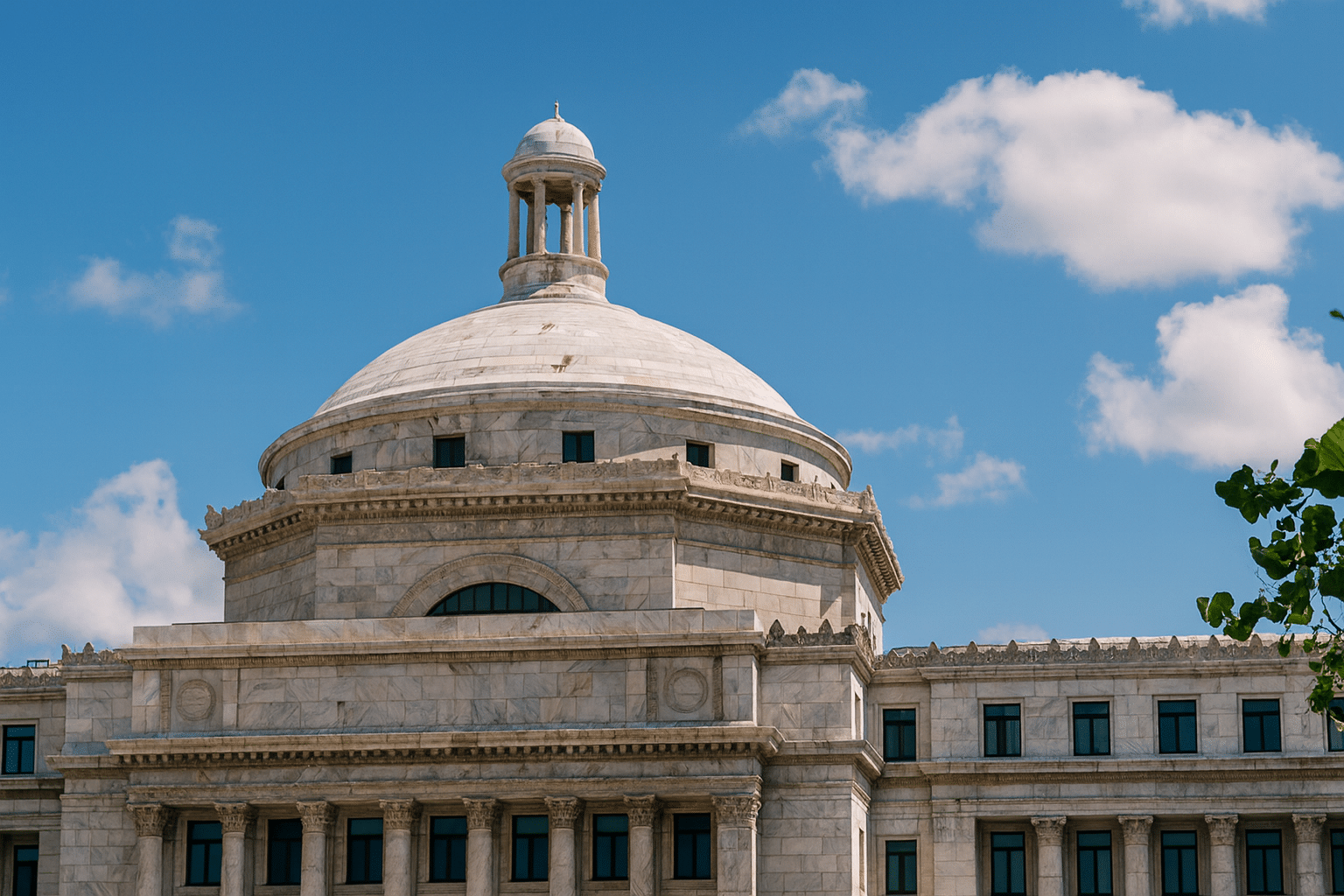
Old San Juan
Opened to the public in 1929, the Capitol of Puerto Rico stands as one of the Island’s most important architectural and political landmarks. Listed on the United States National Register of Historic Places, this stately three-story building made of gleaming marble serves as the official meeting place for Puerto Rico’s legislature, where both senators and representatives gather.
At its center lies the building’s crown jewel — a magnificent rotunda. Here, visitors can view the original Constitution of the Commonwealth of Puerto Rico, displayed with pride beneath a domed ceiling decorated with intricate mosaics that portray defining events in the Island’s history.
Guests are welcome to explore the Capitol through free guided tours, which provide insight into both the political and cultural significance of the site. The building is open Monday through Friday, from 8:30 a.m. to 5:00 p.m. For those interested in scheduling a visit, additional details can be obtained by calling 787-721-5200 ext. 311.
Hacienda Buena Vista

Ponce
Hacienda Buena Vista, located in the mountains of Ponce, offers visitors a window into Puerto Rico’s golden age of coffee production more than 150 years ago. The estate has been carefully restored to showcase its original Spanish colonial architecture, including the main residence, workers’ quarters, farm structures, and coffee-processing facilities. During the 19th century, this plantation gained recognition as one of the Island’s premier coffee producers, celebrated for the exceptional quality of its beans. What makes the site especially unique is its continued use of water from a nearby river to power the historic hydraulic turbines that once drove its operations.
Today, Hacienda Buena Vista functions as a living museum, where guided tours take guests through the daily lives of plantation owners, enslaved workers, and farmers who contributed to the production of coffee, cocoa, and other crops. These tours blend history with hands-on learning, creating a meaningful cultural experience.
The hacienda welcomes visitors Wednesday through Sunday, from 8:00 a.m. to 4:00 p.m. Tours can be reserved through Para La Naturaleza by calling 787-722-5882 or emailing info@paralanaturaleza.org.

